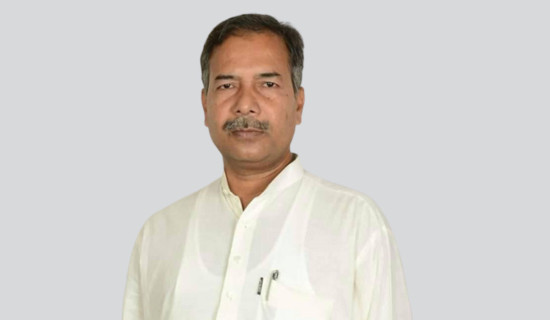- Thursday, 25 December 2025
Unplanned Development Takes Its Toll
Incessant rains over the past weeks, lasting nearly 30 hours, have unleashed devastation across Nepal. To date, over 200 lives have been lost, with more than 30 people still missing. The estimated economic loss is staggering, between $90 and $100 billion, and the toll on both human lives and the economy is expected to rise in the coming days. This prompts a critical question: is this new for Nepal? Haven't we witnessed similar devastation in previous years? The answer is a resounding 'yes.' So, have we done anything substantial to mitigate or prevent it? Clearly, the answer is 'no.' The catastrophic floods and the resulting loss of life and economic damage are not isolated events but symptoms of deeper issues. The root causes lie in unchecked urbanisation, poor infrastructure planning, and a blatant disregard for environmental sustainability.
As the saying goes, "If you fail to plan, you plan to fail." When proper urban planning is neglected, and unregulated development is allowed to proliferate, disaster becomes inevitable. Nepal has seen rapid urbanisation, particularly after the 2015 earthquake, which forced large-scale reconstruction. Unfortunately, much of this development has been poorly regulated and haphazardly executed. Buildings have been erected without adherence to safety codes, and cities have expanded into flood-prone areas. Poorly designed roads, bridges, and drainage systems have been unable to handle the increased water flow during monsoon seasons.
Urban expansion
Rivers and streams that once supported communities have been diverted or restricted to make way for urban expansion, significantly reducing their capacity to carry excess water during heavy rains and causing flash floods. Additionally, deforestation for construction and agriculture has diminished the land's ability to absorb water, leading to higher surface runoff and increasing the flood risk.
The primary cause of these floods is not just heavy rainfall, but the poorly planned development of urban and rural areas. Unregulated construction, particularly in flood-prone zones, has worsened the situation. For instance, concrete jungles have replaced natural wetlands, which once served as vital buffers against flooding. Likewise, uncontrolled embankment construction has hindered rivers from following their natural courses, exacerbating the issue.
Albert Einstein famously defined insanity as doing the same thing over and over again while expecting different results. This definition is strikingly relevant to the way urbanisation and infrastructure development have been handled in Nepal. Year after year, the country suffers devastating losses due to rains and floods. Each time, stakeholders pledge to do better, but the same mistakes are repeated, and the nation endures the same or even greater losses. The cycle continues unabated. Consider, for example, the uncontrolled urbanisation near riverbanks in the Kathmandu Valley. It is not the rivers that have invaded our premises; rather, it is our dwellings that have encroached on the rivers’ natural spaces.
Before constructing infrastructure such as roads, bridges, and water supply systems, a thorough planning is essential. This planning must include geological studies, hydrological data, and forecasts for future demand. Yet, many bridges were swept away during the recent downpours. Social media was flooded with images of submerged bridges, with water flowing over them. This raises serious concerns about whether proper hydrological studies were conducted before these structures were built.
Similarly, road construction in Nepal often ignores essential factors such as geological stability, landslide risks, and proper geometric design. Roads are frequently built without adequate planning, leading to accidents, landslides, and flood damage. The same fate befalls water supply projects; for example, the Melamchi water supply project has been repeatedly disrupted by floods and landslides. Such cases are widespread across the country.
Nepal government often touts its 'early warning systems' for disaster management and spends millions on seminars and conferences under the guise of National Disaster Risk Reduction and Management. Yet, as the saying goes, "the proof of the pudding is in the eating." When disaster strikes, help doesn’t arrive for days, even as people cry for rescue from rooftops. In many instances, it is up to good Samaritans to brave the floodwaters and save lives.
Environmental risks
Addressing the issue of unplanned and haphazard development is crucial for Nepal’s future. The government, along with local authorities, must prioritise enforcing building codes and regulations, particularly in flood-prone areas. Urban planning must account for the environmental risks associated with unchecked expansion. Developing sustainable infrastructure, such as adequate drainage systems, flood-resistant buildings, and preserving green spaces, can significantly reduce these risks.
In conclusion, the recent floods in Nepal serve as a stark reminder of the consequences of unplanned development. It is imperative that the country should learn from these recurring disasters and takes decisive steps toward better urban planning, sustainable planned infrastructure development, and environmental conservation. Only then can Nepal hope to break the relentless cycle of disaster and loss that has plagued it for far too long.
(Dr. Puri holds a PhD from Tokyo University and a postdoc from the University of Illinois at Urbana-Champaign, USA.)
















